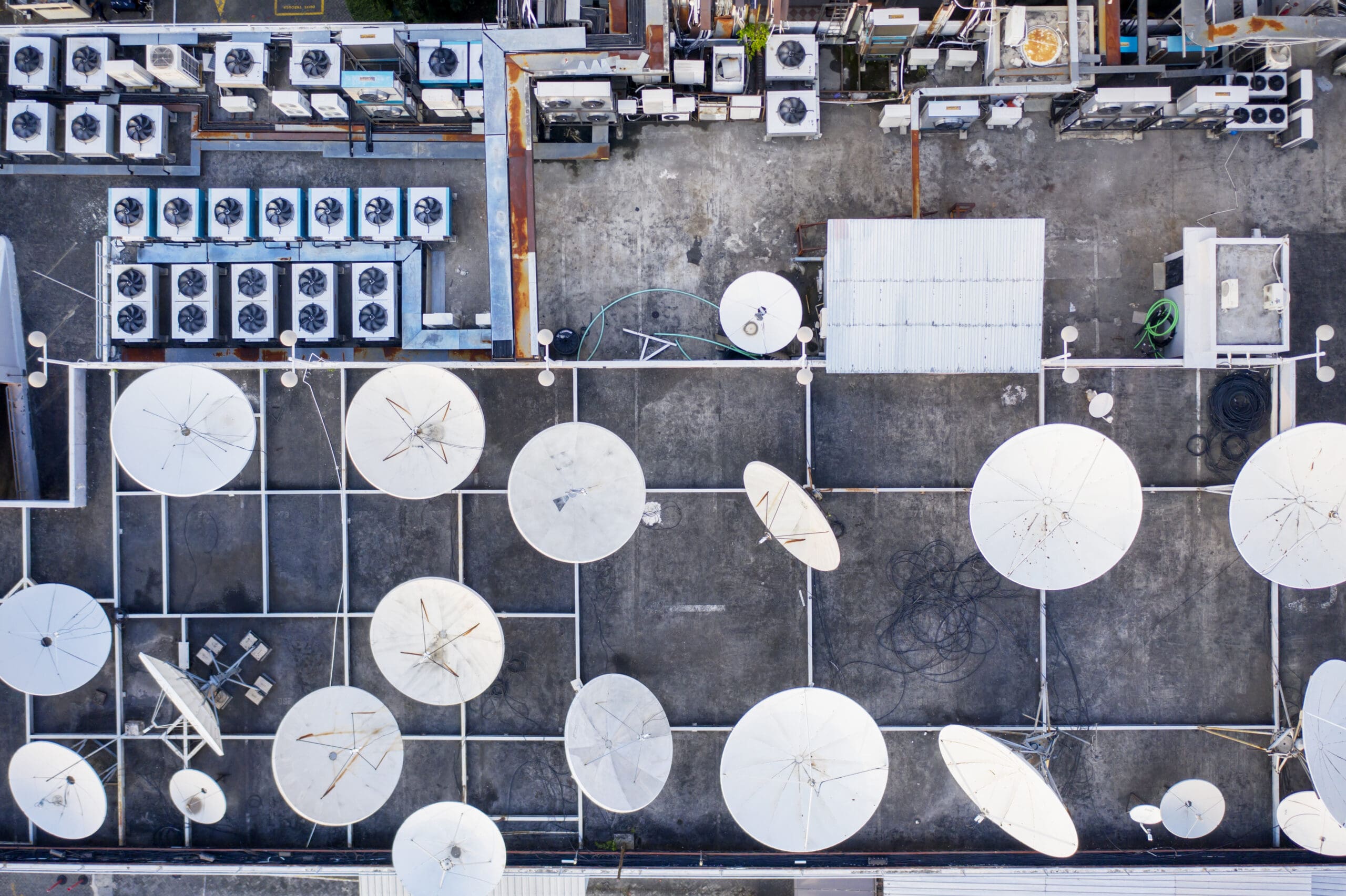The satellite landscape has changed dramatically over recent years. We are seeing more capacity than ever before and in the medium to long term satellite operators are expecting increasing demand from areas such OTT video, IoT, and 5G backhaul. The prolific launch of small satellites and the move to higher frequencies mean that the engineering challenges for both satellite payload and ground amplifiers are increasing. But what impact will this evolution of satellite have on the manufacturers and how can you ensure your amplifiers will rise to the challenge?
Rising Frequency
Over recent years, due to HTS and the anticipated new LEO/MEO constellations capacity has been increasing, hence driving bandwidth costs down. In addition, the crowded frequency spectrum and more complex modulation schemes have increased the bandwidth requirements, which in turn, has increased the operating frequencies. Historically in the industry we have seen frequencies increase from L band, to C band to KU to Ka with satellite operators now looking at the Q/V band bands (circa 50GHz).
For the satellite industry this is great news. The increase in frequency means more bandwidth available for new applications. It also means a decrease in wavelength; hence we have seen antennas steadily reducing in size. This is also good news both in terms of being able to manufacture much smaller antennas, generally at a lower cost, and in terms of mobility, making it the obvious choice for comms on the move.
When it comes to amplifier technology, there are two key implications. The first is that high frequency means you can make the amplifier itself much smaller, as well for the same reason as antennas get smaller. With satellite operators looking to reduce payload size and satellite users jostling for real estate on their satellite equipment, anything that makes the equipment more compact is certainly positive.
However, higher frequencies also increase the engineering challenges for amplifier technology. This is because as the frequency goes up, parasitic elements in circuits increase the engineering design challenges and tolerances required.

Small satellites
Small satellites and mega Low Earth Orbit (LEO) constellations are probably the biggest and hottest topic in our industry right now. With so many new launches planned, there is a great deal of mixed feelings around the impact that will have on the satellite industry as a whole. On the one hand, the mega constellations bring with them the promise of more capacity than ever before and the ability for satellite to play a leading role in new and exciting applications, from Internet of Things to enabling 5G.
On the other hand, such a massive influx of new satellites in an already crowded space environment is an area of concern for many, worried about the impact on space debris and interference in particular.
When it comes to amplifier technology, there will be a few key necessities for LEO constellations. The first is quite simply that any equipment needs to be affordable. When you are looking at large scale mega constellations, the price per piece needs to be low to make it possible to support an entire network.
Frequency will again be an issue for LEO as these satellites will operate in Ku- to Ka-band with very Low Earth Orbit (VLEO) operating in V-band, a very high frequency. The size reduction these bands deliver will be extremely important in LEO as operators are looking to keep equipment to a minimum. Amplifiers need to be compact to work for LEO.
One advantage of the LEO mega constellations is the built-in redundancy due to the number of satellites.

Overcoming the Engineering Challenges
As the march to higher frequencies continues amplifier manufacturers will have significant engineering challenges to overcome to handle the higher frequencies whilst ensuring signal fidelity. That said, this is not insurmountable, it just requires good engineering design theory and practice. Quality control will be more important than ever before as will the flexibility to customise amplifiers to the application requirements. Ultimately the rising frequencies will lead to better and more stringent engineering and that can never be a bad thing.
To view ETL’s range of 19 rack mounted RF amplifiers, please click here
To view ETL’s range of component RF amplifiers, please click here

Alex Donnison, Business Development Manager, ETL Systems.